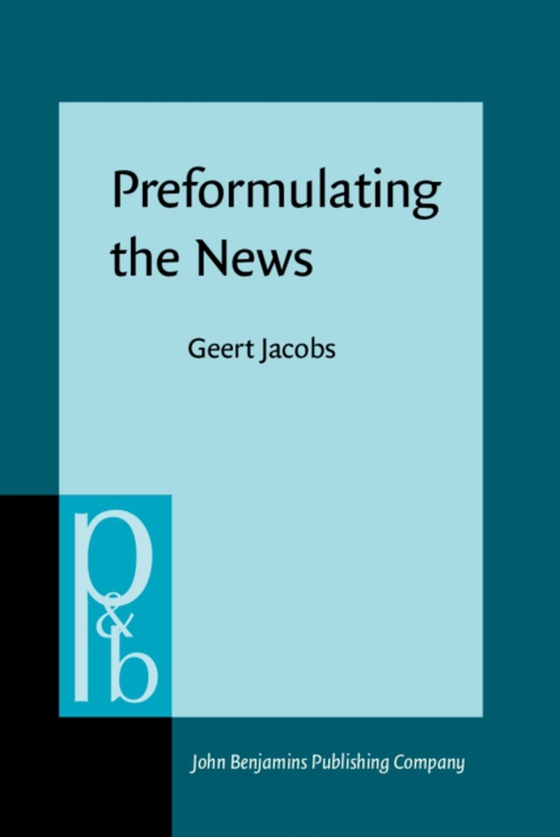
Preformulating the News e-bog
1021,49 DKK
(inkl. moms 1276,86 DKK)
Preformulating the News is a study of press releases and of how they anticipate the requirements of journalistic writing. Drawing from a large corpus (Dutch and English), it is argued that the genre's peculiar audience-directedness can be related to a number of metapragmatic textual features and that this sheds light on the asymmetries of what can be termed the 'newsmaking' and 'news management...
E-bog
1021,49 DKK
Udgivet
15 maj 1999
Længde
444 sider
Genrer
Usage and grammar guides
Sprog
English
Format
pdf
Beskyttelse
LCP
ISBN
9789027283870
Preformulating the News is a study of press releases and of how they anticipate the requirements of journalistic writing. Drawing from a large corpus (Dutch and English), it is argued that the genre's peculiar audience-directedness can be related to a number of metapragmatic textual features and that this sheds light on the asymmetries of what can be termed the 'newsmaking' and 'news management' processes.In the first chapter the study of press releases is put in the context of institutional discourse and the details of a linguistic pragmatic research method are proposed. Chapter 2 looks at the complex receiver roles in press releases, which are characterized as indirectly targeted, i.e. 'projected', discourse. In chapters 3 to 6 a data analysis of the metapragmatics of press releases is presented: in particular, it is shown that self-reference, pseudo-quotation and explicit semi-performative play a 'preformulating' role in press releases. Chapter 7 offers a case study of the press releases that the American multinational Exxon issued in the wake of the 1989 Alaska oil spill. In the eighth and final chapter it is suggested that the study's findings support a hegemonic view of the media.In analysing the much neglected genre of press releases, the book aims to contribute to the study of the language of the news. At the same time, it explores more general issues of participation and footing as well as reflexive language, including deixis, reported speech and performativity.
 Dansk
Dansk

